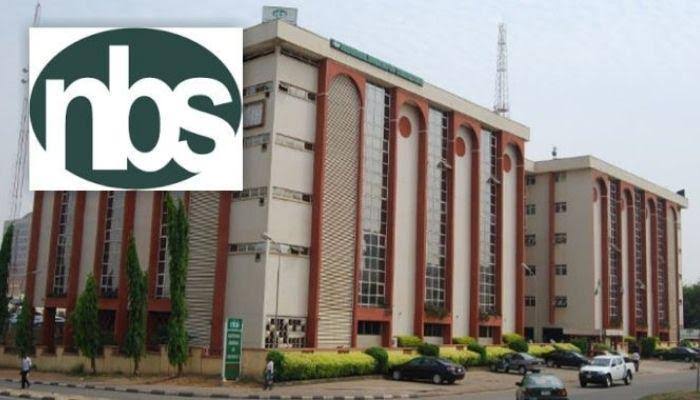The National Bureau of Statistics (NBS)’s latest result released on Wednesday indicates that in December 2024, the Headline inflation rate was 34.80% relative to the November 2024 headline inflation rate of 34.60%.
The December 2024 Headline inflation rate showed a marginal increase of 0.20% compared to the November 2024 Headline inflation rate, due to December festive period increases in demand for goods and services.
On a year-on-year basis, the Headline inflation rate was 5.87% higher than the rate recorded in December 2023 (28.92%). This shows that the Headline inflation rate (year-on-year basis) increased in December 2024 compared to the same month in the preceding year (i.e., December 2023).
On the contrary, the month-on-month basis, the Headline inflation rate in December 2024 was 2.44%, which was 0.20% lower than the rate recorded in November 2024 (2.64%). This means that in December 2024, the rate of increase in the average price level is slightly lower than the rate of increase in the average price level in November 2024.
The contributions of items on the Divisional level to the increase in the Headline index are
The percentage change in the average CPI for the twelve months ending December 2024 over the average for the previous twelve-month period was 33.24%, showing an 8.58% increase compared to 24.66% recorded in December 2023.
On a year-on-year basis, in December 2024, the Urban inflation rate was 37.29%, 6.30% points higher compared to the 31.00% recorded in December 2023. On a month-on-month basis, the Urban inflation rate was 2.56% in December 2024, this was 0.21% points lower compared to November 2024 (2.77%).
The corresponding twelve-month average for the Urban inflation rate was 35.57% in December 2024. This was 9.36% points higher compared to the 26.22% reported in December 2023 .
The Rural inflation rate in December 2024 was 32.47% on a year-on-year basis. This was 5.37% higher compared to the 27.10% recorded in December 2023. On a month-on-month basis, the Rural inflation rate in December 2024 was 2.32%, down by 0.19% points compared to November 2024 (2.51%).
The corresponding twelve-month average for the Rural inflation rate in December 2024 was 31.14%. This was 7.89% higher compared to the 23.25% recorded in December 2023.
The Food inflation rate in December 2024 was 39.84% on a year-on-year basis, 5.91% points higher compared to the rate recorded in December 2023 (33.93%).
The rise in Food inflation on a year-on-year basis was caused by increases in prices of the following items; Yam, Water Yam, Sweet Potatoes, etc (Potatoes, Yam & Other Tubers Class), Beer, Pinto (Tobacco Class), Guinea Corn, Maize Grains, Rice, etc (Bread and Cereals Class), and Dried Fish-Sadine, Catfish Dried, etc (Fish Class).
On a month-on-month basis, the Food inflation rate in December 2024 was 2.66% which shows a 0.32% decrease compared to the rate recorded in November 2024 (2.98%).
The decline can be attributed to the rate of decrease in the average prices of Local Beer (Burukutu), Pinto (Tobacco Class), Fruit Juice in tin, Malt drinks, etc (Soft Drinks Class), Rice, Millet, Maize flour, etc (Bread and Cereals Class) and Water Yam, Irish Potatoes, Coco Yam, etc (Potatoes, Yam & Other Tubers Class).
The average annual rate of Food inflation for the twelve months ending December 2024 over the previous twelve-month average was 39.12%, which was 11.16% points higher compared with the average annual rate of change recorded in December 2023 (27.96%).
The CPI measures the average change over time in the prices of goods and services consumed by people for day-to-day living.
The construction of the CPI combines economic theory, sampling, and other statistical techniques using data from other surveys to produce a weighted measure of average price changes in the Nigerian economy.
The weighting occurs to capture the importance of the selected commodities in the entire index. The production of the CPI requires the skills of economists, statisticians, computer scientists, data collectors, and others.
Key in the construction of the price index is the selection of the market basket of goods and services. Every month, 10,534 informants spread across the country provide price data for the computation of the CPI. The market items currently comprise 740 goods and services regularly priced.
The first stage in the calculation of the CPI is the collection of prices on each item (740 goods and services) from outlets in each sector (rural or urban) for each state. Prices are then averaged for each item per sector across the state.
The next step is to use the average price to calculate the basic index for each commodity: The current year price of each commodity is compared with a base year’s price to obtain a relative price.
Next, we use the Laspeyres formula to compute an aggregated index for each class (which has a multitude of commodities that have similar consumption purposes):
The sum of the product of weights (obtained from the expenditure survey) and relative prices for each item is divided by the sum of the weight of the items in that class, and the result multiplied by 100 gives the required index number.
This index number is still classified according to the urban and rural sectors for each of the 36 states and the FCT. This yields 85 classes then 48 groups which are then reclassified into 12 Divisions to derive.











